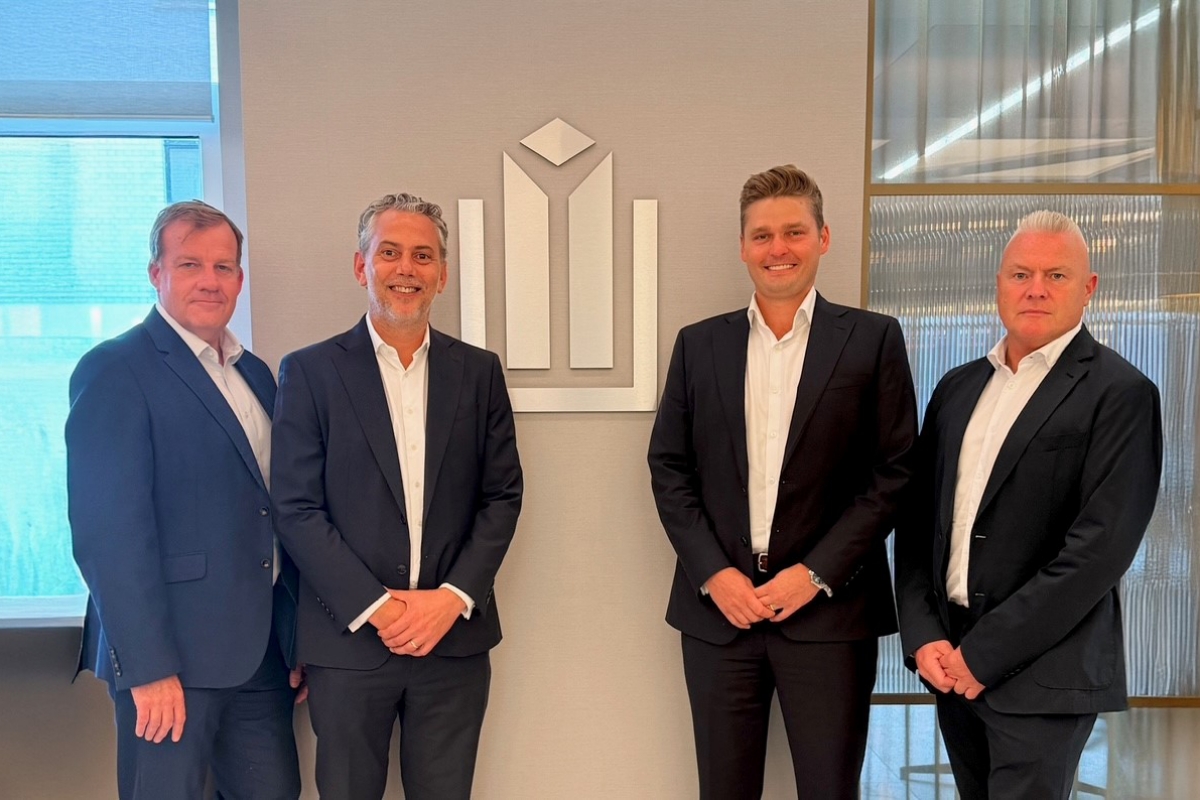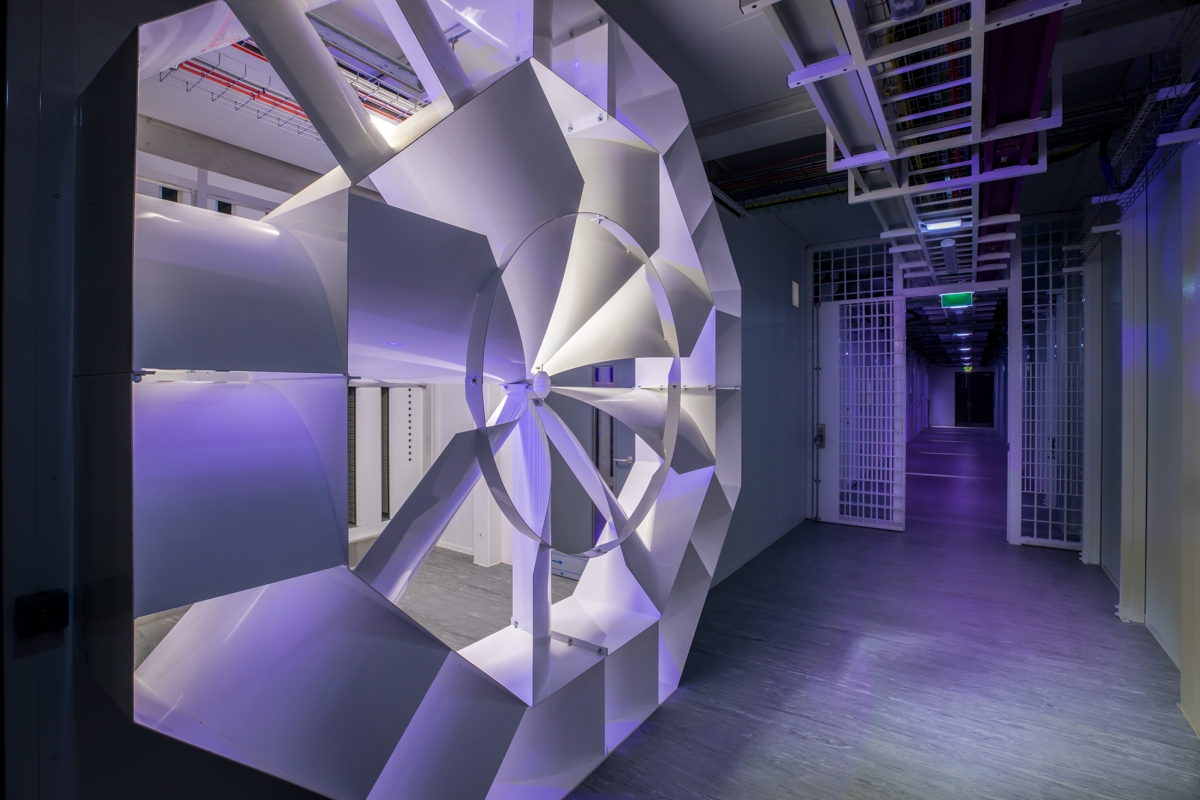Data Centres
Data Centre Infrastructure News & Trends
Data Centres
Liquid Cooling Technologies Driving Data Centre Efficiency
News
STULZ invests in Hamburg production facility for liquid cooling
STULZ, a manufacturer of mission-critical air conditioning technology, has invested in a new production facility dedicated to liquid cooling systems at its headquarters in Hamburg.
The expansion reflects the company’s focus on meeting growing demand for advanced cooling systems across high-performance computing and AI-driven data centres.
The site extension enables closer collaboration between STULZ’s research and development, product management, and service teams, aiming to improve internal coordination and streamline workflows.
According to the company, this will accelerate the delivery of liquid cooling innovations, reduce time to market, and enhance customer support capabilities across global markets.
“Liquid cooling is a highly effective way to efficiently dissipate heat from the sensitive IT equipment found in modern data centres,” says Jörg Desler, Global Director Technology at STULZ.
“Liquid cooling solutions must therefore be manufactured to the highest standards, with rigorously tested materials, modern quality management, efficient production processes, and qualified and experienced personnel.
"We are proud to have these attributes in place in Hamburg and are already expanding upon them with our new production facility.”
STULZ offers a range of liquid cooling systems which it says are tailored to the needs of modern data centre environments. These include configurable complete systems, advanced chillers with free cooling functionality, and modular technologies for scalable, high-density deployments.
The company states that all offerings are designed for precise temperature control, reliability, and sustainability.
Among the products manufactured at the new facility is the CyberCool CMU cooling distribution unit, which enables control over both the facility water system and the technology cooling system.
It manages coolant flow, temperature, and pressure across both sides of the liquid cooling infrastructure, with the aim of improving efficiency. The unit is available in two sizes and provides a continuously variable output of up to 1,380kW. It can also be customised to meet specific project requirements.
The CyberCool CMU is produced in Hamburg and distributed to customers across the EMEA and US regions, while other STULZ production sites supply additional global markets. New variants and expanded product sizes are currently under development, supported by ongoing investment in the Hamburg facility.
“With this expansion of our production capabilities, we are demonstrating our commitment to Hamburg and thus creating a further basis for growth, innovation, and sustainable employment, even in the face of international competition,” adds Jörg.
“The development of liquid cooling for high performance computing and AI-driven data centres is a key component of our strategy to strengthen technological leadership and uphold our high standards of quality and service.”
For more from STULZ, click here.
Joe Peck - 24 July 2025
Data Centre Build News & Insights
Data Centre Projects: Infrastructure Builds, Innovations & Updates
Data Centres
'Construction’s digital lag risks derailing data centre boom'
As the UK accelerates investment in AI infrastructure - committing billions to 'AI Growth Zones' and sovereign compute capacity - a new white paper from integrated collaboration platform Revizto warns that delivery of the data centres required to power the UK’s digital transformation could fall short unless building methods evolve to keep pace with demand.
This risk is underscored by the rapid growth of the UK data centre market, which is expected to more than double in value by 2030, growing at over 13% annually and contributing an additional £44 billion to the economy by 2035.
However, to realise this economic potential, the UK must accelerate the delivery of modern digital infrastructure to meet sustained demand for AI. Currently, the UK construction sector is struggling to keep pace – putting both infrastructure delivery and the UK’s broader economic ambitions at risk.
Revizto’s recent 2025 Digital Design & Construction Report reveals that, despite significant interest in AI across the Architecture, Engineering, Construction, & Operations (AECO) industry, technology adoption remains a critical barrier, with many UK project teams still relying on static, non-integrated tools like email, Excel and PDFs to manage complex and fast-moving projects.
Revizto’s research with over 2000 industry leaders found that:
· 63% of UK AECO professionals are closely following developments in AI and automation.· But for 25% of leaders, tech integration is their top business challenge – ranking above rising costs, talent shortages, and regulatory requirements.· Globally, over a quarter (26%) still rely on email, spreadsheets, and PDFs as their primary digital tools.
The data points to a persistent reliance on non-integrated technology, despite increasing complexity in projects and tightening timeframes. This reliance is slowing delivery and increasing risk on data centre projects that demand precision, speed, and scale.
To meet explosive demand, the digital infrastructure behind AI must be delivered faster and more efficiently. But, as Revizto’s new white paper, The Infrastructure Behind Innovation, shows, delivering at scale and pace brings intense challenges.
Data centre construction demands complex coordination, massive datasets, strict regulatory compliance, high-stakes communication, and tight timeframes – with some projects now moving from concept to full design in as little as ten weeks.
Arman Gukasyan, Founder and CEO of Revizto, comments, “The global data centre boom brings enormous promise, but also new levels of complexity, urgency, and risk.
"The construction industry can’t keep pace with demand using static tools like Excel and PDFs. If the UK is serious about leading in AI, it must fundamentally shift how it delivers the physical infrastructure required for digital transformation.”
To secure the UK’s position as a leader in AI and innovation, the AECO industry must rapidly embrace new technologies and collaborative approaches. By modernising methods and accelerating digital adoption, the sector can deliver the data centre capacity needed to unlock economic growth and ensure the UK remains at the forefront of the AI revolution.
Joe Peck - 23 July 2025
Data Centre Build News & Insights
Data Centre Projects: Infrastructure Builds, Innovations & Updates
Data Centres
News
MP visits Datum's new Manchester data centre
Mike Kane MP, Member of Parliament for Wythenshawe and Sale East, and Parliamentary Under-Secretary of State at the Department for Transport, recently visited UK data centre provider Datum Datacentres’ newly constructed MCR2 data centre in Manchester.
Datum’s latest data centre is the first completed construction project in the £500 million regeneration plan for Wythenshawe. Mike toured the facility, learning about its role in shaping local regeneration and its contribution to supporting businesses across Manchester.
Mike, who himself has lifelong ties to the area, expressed a keen interest in the impact MCR2 looks to have on the region and was keen to understand its role in driving local regeneration and supporting businesses throughout Manchester.
Alongside fostering growth among its future tenants, the construction process emphasised the employment of local contractors wherever feasible. This strategy aimed to strengthen the local economy while reflecting the project's dedication to minimising environmental impact.
Mike Kane MP comments, “It’s remarkable to see a project of this scale right at the heart of the community in Wythenshawe. This facility sets a new benchmark for sustainable, cutting-edge infrastructure while creating pathways to economic growth and wider opportunities for the region.”
During a tour of the facility, Mike was shown how MCR2 demonstrates environmentally sustainable design. As part of the construction process, Datum conducted a carbon impact assessment and integrated sustainability measures, including the installation of efficient free cooling systems to minimise environmental impact, and the incorporation of heat exchange technology to support local community heating initiatives.
The site’s backup generators run on environmentally-friendly Hydrotreated Vegetable Oil (HVO) instead of red diesel. Additionally, the site has a design PUE (Power Usage Effectiveness) of 1.25.
Its data halls are built to accommodate a range of clients - from SMEs to large enterprises - offering flexible power density options and IT infrastructure support. The site also includes advanced security measures, including police-linked on-site facilities.
Matt Edgley, COO at Datum Datacentres, notes, “We were delighted to welcome Mike Kane MP to MCR2 and showcase the culmination of this significant construction effort. The facility symbolises our commitment to revitalising Wythenshawe while bolstering Manchester’s growth as one of the UK’s premier tech hubs.”
MCR2 hopes to play a pivotal role in driving regional economic growth and attracting enterprise activity to Manchester. Its completion represents an achievement in sustainable development and also seeks to open new opportunities for businesses across diverse industries.
Jon Healy, Managing Director EMEA at Salute, says, "It has been a fantastic project to be involved in and it’s great to see the positive impact it will have on the region. This state-of-the-art and sustainable data centre provides the critical infrastructure needed to support the region’s continued growth."
The official launch of MCR2 took place at the end of June and the site is now welcoming visitors who would like to tour the facility.
For more from Datum Datacentres, click here.
Joe Peck - 22 July 2025
Commercial Real Estate: Property Developments, Trends & Infrastructure
Data Centre Business News and Industry Trends
Data Centres
Insights into Data Centre Investment & Market Growth
W Denis launches insurance offering for data centres
W Denis, a UK-based, independent insurance broker, has launched a new specialist division focused exclusively on insuring data centres and their integrated power generation infrastructure.
W Denis’ new division is unique in the insurance market by offering dedicated cover not only for the data centre buildings, plant, and technology, but also for the electricity generation assets, such as traditional CHP through to modern clean/green tech power, solar, wind, and hybrid systems, which provide resilience and independence from grid failures.
Capacity in the billions (£/€/$) is available through either direct insurance or facultative reinsurance structures, arranged with global insurers and reinsurers. This enables support for single-site, multi-site, and portfolio programmes across diverse geographies.
The offering includes a range of risk and insurance solutions for all phases of a data centre’s lifecycle:
• Construction all risks (CAR), including delay in start-up• Operational property damage and machinery breakdown• Business interruption, including utility failure triggers• On-site power generation asset insurance• Third-party legal liabilities• Legal indemnities (e.g. planning, easements)• Cyber, data breach, and E&O exposures• Specialist claims support and advocacy
In addition to insurance placement, W Denis says it provides clients with risk management consultation during pre-design, construction, and operational stages. This includes engineering risk reviews, loss prevention advice, and support with resilience planning.
Mark Dutton, Chief Commercial Officer at W Denis, comments, “Data centres are among the most critical and energy-intensive assets in the modern economy. Our new division recognises that effective insurance must cover both the data and the power that keeps it alive. Our clients benefit from deep technical expertise, strong capacity, and joined-up coverage from build to operation.”
Joe Peck - 16 July 2025
Data Centre Build News & Insights
Data Centres
Sustainable Infrastructure: Building Resilient, Low-Carbon Projects
Aligned’s Phoenix data centre earns Three Green Globes
Aligned Data Centers, a technology infrastructure company, has announced its latest Phoenix data centre to receive the Green Globes for New Construction certification from the Green Building Initiative (GBI). Aligned’s PHX-06 data centre received a rating of Three Green Globes for its success in resource efficiency, environmental impact reduction, and improvements in occupant wellness.
“As the global demand for AI and high-performance computing continues to accelerate, we’re continuously looking for new ways to increase the efficiency and sustainability of our data centres, even as we keep pace with and anticipate the growth of that demand,” states Andrew Schaap, CEO of Aligned. “GBI's third-party review of PHX-06 resulted in an award of [the] Three Green Globes certification, which is a testament to our relentless pursuit of sustainable excellence.
"This recognition not only validates the exceptionally high standards we set for environmentally responsible design and construction, but also underscores our unmatched speed of delivery, which enables massive, future-proof scalability across the Americas. Despite continuous innovation and ever-higher standards, Aligned remains the highest certifying data centre in the programme.”
Aligned's Three Green Globes achievement for PHX-06 was driven by factors like reduced water usage, efficient cooling, and 100% renewable power.
Another contributing factor to its certification is the company’s Adaptive Modular Infrastructure (AMI), which uses standardised, prefabricated modules for various building components. AMI seeks to sustainably accelerate deployment timelines and minimise waste by relying on repeatable manufacturing processes that produce fewer components and cut down on Scope 3 emissions through reduced onsite construction.
“Achieving this level of sustainability is an outstanding accomplishment and Aligned should be proud of the strategies applied to the design and construction of this facility,” comments Vicki Worden, GBI CEO. “We look to data centre owner-operators to be responsible stewards of the planet’s resources, and Aligned continues to demonstrate its leadership in sustainability with its exceptional outcomes in energy efficiency, water conservation, carbon emissions reduction, and occupant health.”
Founded in 2004, GBI is an international nonprofit organisation and American National Standards Institute (ANSI) Accredited Standards Developer dedicated to improving the built environment’s impact on climate and society. GBI’s Green Globes third-party certification process involves a design and onsite assessment, evaluating environmental assessment areas including project management, site, energy, water, resources, emissions, and indoor environment.
For more from Aligned, click here.
Joe Peck - 10 July 2025
Commercial Real Estate: Property Developments, Trends & Infrastructure
Data Centre Business News and Industry Trends
Data Centres
Panattoni launches into data centres with senior hires
Panattoni, a logistics real estate developer in Europe, has launched a new initiative to develop data centres across Europe, the UK, India, and the Middle East with the appointment of four senior specialists.
Panattoni’s new dedicated data centres team will be led by Richard Wellbrock, who joins as Managing Director, Data Centres. He brings more than 25 years of real estate experience, including almost 20 years focused on the development of data centres - most recently, as Chief Commercial Officer at Colt Data Centre Services (DCS), a global data centre operator. Richard played a role in delivering large-scale data centre campuses across Europe and Asia, driving growth from 100MW to 1GW, including supporting a $1.5 billion (£1.1 billion) joint venture with Mitsui.
Joining Richard Wellbrock at Panattoni are Nick Parker, Head of Capital Deployment; John Belton, Head of Development; and Paul Terry, Infrastructure Director.
Nick Parker, who was previously Global Senior Director of Asset Management at Colt DCS, where he led more than €5 billion (£3.67 billion) in capital deployment strategies, supported transactions of around 250MW with hyperscale customers and played a role in structuring international joint ventures and investment strategy across India, Japan, and Europe.
John Belton, who served as Global Senior Director of Development at Colt DCS, has around 40 years’ experience in engineering and data centre development. He managed Colt DCS’s global development portfolio, creating a pipeline capable of delivering more than 1GW of IT load across multiple countries.
Paul Terry, who was Colt DCS’s Global Director of Development Infrastructure, led infrastructure design and delivery from land acquisition through to handover, managing major utility and technology programmes.
All four will be based in London and report to Robert Dobrzycki, CEO and Co-owner of Panattoni Europe, UK, Middle East, and India.
Robert Dobrzycki, CEO, comments, “This is a significant new chapter for Panattoni. Data centres are essential infrastructure for the modern economy and we are now building a world-class platform to deliver them. Richard and his team bring exceptional experience and insight.”
Richard Wellbrock, Managing Director, Data Centres, adds, “Panattoni has an outstanding track record of development at scale and pace. With our team now in place, we’re looking forward to growing the business across Europe, the UK, India, and the Middle East, supporting hyperscalers, cloud providers, and enterprise customers with high-quality data centre solutions.”
Panattoni’s expansion into data centres builds on its existing experience in large-scale industrial and logistics development, which has seen it deliver more than 23 million m² across Europe.
Joe Peck - 10 July 2025
Data Centre Infrastructure News & Trends
Data Centres
Innovations in Data Center Power and Cooling Solutions
Mansfield Pollard and BladeRoom announce partnership
Mansfield Pollard, a manufacturer of air handling units and environmental control systems, and BladeRoom Data Centres, a manufacturer of modular data centre systems and sustainable infrastructure, have announced a new partnering arrangement that paves the way for the businesses to collaborate and deliver cooling solutions for the fast-growing data centre market in the UK and globally.
The new agreement builds on a 15-year-long relationship, during which time both businesses have used their history of developing engineering solutions to support the high-tech and mission-critical market of data centre cooling.
Building on this foundation, the partnership will see the two companies collaborate on research and development to meet growing demand for advanced air- and water-based cooling solutions, supporting evolving AI and high-performance computing applications.
Over 210MW of IT cooling has been delivered to date, and further systems are in production. These systems, the companies say, are designed to be "adaptable and forward-looking," accommodating new compute technologies while maintaining compatibility with legacy estates.
As cooling requirements continue to increase with the latest chipsets and processing densities, the partnership intends to place added emphasis on "innovative" approaches, including hybrid system architectures that combine the strengths of air and liquid cooling. These designs aim to enable integration within new or existing facilities and support retrofitting strategies that extend the lifecycle of established data centres.
Louise Ellis-Frankland, Chief Executive of Bradford-based Mansfield Pollard, says, "Mansfield Pollard and BladeRoom Data Centres have always been aligned in our values, especially when it comes to sustainability, energy efficiency, and technological advances.
“Both companies have a strong focus on responsible manufacturing and driving innovation, making this partnership a natural evolution in our longstanding relationship."
Will Thornton, Chief Executive of BladeRoom Data Centres, comments, "As a company that prides itself on delivering low-energy, high-efficiency data centre infrastructure solutions at any scale, our partnership with Mansfield Pollard adds a whole new dimension to what we can offer our clients.
“Their innovative technologies align seamlessly with our commitment to dramatically reduce energy consumption and build the world’s most efficient, sustainable, and operationally superior data centres."
Head of Sales for BladeRoom Data Centres Edward Dusting adds, “This collaboration also focuses on retrofitting our existing facilities with cutting-edge, energy-efficient cooling technologies, be that via air or water.
“This ensures that already established data centre estates, such as those delivered for our partners Ark Data Centres, always achieve optimal performance whilst becoming future-ready, AI-optimised infrastructure ready for the next generation of innovation.”
Joe Peck - 9 July 2025
Data Centre Infrastructure News & Trends
Data Centres
Enterprise Network Infrastructure: Design, Performance & Security
Digital Realty collaborates with Vodafone Greece
Digital Realty, a provider of cloud- and carrier-neutral data centre, colocation, and interconnection systems, has announced a collaboration with Vodafone Greece, a telecommunications, IoT, and 5G connectivity provider, to enhance Crete’s digital infrastructure and connectivity. This collaboration, according to Digital Realty, "underscores both companies’ commitment to fostering Crete’s emergence as a key connectivity hub in the Mediterranean."
As part of this collaboration, Vodafone Greece will establish a point of presence (PoP) at Digital Realty’s HER1 data centre in Heraklion, the first carrier-neutral interconnection point for all cable landing stations in Crete. The facility will host customers’ submarine line terminating equipment, creating a link in the island’s connectivity ecosystem.
Vodafone Greece intends to deploy a dual-route connectivity system between HER1 and its cable landing station in Tympaki in southern Crete to enhance capacity and resilience. These routes will also serve as backhaul services for major subsea cables landing in Crete by connecting to the HER1 data centre.
Connectivity between Chania and Heraklion should also become more robust due to the Vodafone Greece terrestrial network, enhancing the infrastructure for cloud service providers, large enterprises, internet service providers, content delivery networks, and carriers. These developments also supplement Vodafone Greece’s existing connectivity services between Athens and Crete through Chania in the west and Sitia in the east.
“This collaboration with Vodafone Greece marks a transformative moment for Crete’s digital infrastructure,” comments Alexandros Bechrakis, Managing Director of Digital Realty in Greece. “Our HER1 data centre is designed to establish Crete as a strategic digital hub which requires close collaboration with local, regional, and global partners. By supporting critical landing cables and enhancing regional connectivity, we’re reinforcing Crete’s position as a gateway to Southern Europe and beyond. This collaboration with Vodafone Greece reflects our shared commitment to delivering world-class digital services and infrastructure that empower local communities and businesses.”
Nikos Plevris, Chief Network Officer, Vodafone Greece, states, “Our partnership with Digital Realty is another critical step in what we have managed to implement through the construction and operation of our submarine cable landing station in Tympaki, Crete. Having agreements in place on the interconnection for some of the largest subsea fibre optic cables in the world, we connect the country with the rest of the world, bolstering Greece's digital economy and offering new opportunities for our communities, partners, and the entire country. [By] combining our infrastructure in the area with Digital Realty’s, it is certain that we will build something truly impactful, and we are looking forward to seeing the results of this collaboration."
For more from Digital Realty, click here.
Joe Peck - 9 July 2025
Data Centre Security: Protecting Infrastructure from Physical and Cyber Threats
Data Centres
Security Risk Management for Data Centre Infrastructure
Global data centres face rising climate risks, XDI report warns
Data centres are facing sharply rising risks from climate-change-driven extreme weather, according to a major new report released today by XDI (Cross Dependency Initiative), a company which is concerned with physical climate risk analysis.
The company argues that without urgent investment in emissions reduction and physical adaptation, operators could face soaring insurance premiums, growing disruption to operations, and billions in damages.
XDI’s 2025 Global Data Centre Physical Climate Risk and Adaptation Report offers a global picture of how extreme weather threatens the backbone of the digital economy. The report ranks leading data centre hubs by their exposure to eight climate hazards — flooding, tropical cyclones, forest fires, coastal inundation, and others — now and into the future and under different climate scenarios. It is based on analysis of nearly 9,000 operational and planned data centres worldwide.
The report quantifies how targeted structural adaptations (changes to the physical design and construction of data centres) can dramatically improve resilience, reduce risk, and help curb escalating insurance costs.
“Data centres are the silent engine of the global economy. But as extreme weather events become more frequent and severe, the physical structures underpinning our digital world are increasingly vulnerable,” says Karl Mallon, Founder of XDI (Cross Dependency Initiative).
"When so much depends on this critical infrastructure and with the sector growing exponentially, operators, investors, and governments can’t afford to be flying blind. Our analysis helps them see the global picture, identify where resilience investments are most needed, and chart pathways to reduce risk."
Key insights from the report include that:
• Data centre hubs in New Jersey, Hamburg, Shanghai, Tokyo, Hong Kong, Moskva, Bangkok, and Hovestaden are all in the top 20 for climate risk by 2050, with 20-64% of data centres in these hubs projected to be at high risk of physical damage from climate change hazards by 2050.
• APAC is the fastest growing region for data centre growth in the world, yet it also carries some of the greatest risk, with more than one in ten data centres already at high risk in 2025, becoming more than one in eight by 2050.
• Insurance costs for data centres globally could triple or quadruple by 2050 without decisive mitigation and adaptation.
• Targeted investments in resilience could save billions of dollars in damages annually.
The report highlights that climate risk varies dramatically by location, even between data centres in the same country or region. This kind of like-for-like, jurisdiction-spanning analysis, XDI argues, is critical for guiding smarter investment decisions in new and existing data centres - helping asset owners, operators, and investors allocate capital where it will have the greatest impact on protecting long-term value.
The report also reinforces that decarbonisation and adaptation must go hand in hand to safeguard the digital economy for the long term. Adaptation is essential, but the most resilient data centre is only as secure as the infrastructure it depends on — such as roads, water supply, and communications links — which are themselves vulnerable to climate hazards. Without ambitious and sustained investment in emissions reduction to limit the severity of climate change, no amount of structural hardening will fully protect these critical assets.
Joe Peck - 9 July 2025
Data Centre Business News and Industry Trends
Data Centres
Insights into Data Centre Investment & Market Growth
Debunking the myth: The world is not running out of data centres
Concerns about resource depletion are not new to economists. From fears of "peak oil" to anxieties over food shortages, history has shown that as demand surges, supply mechanisms adapt accordingly. Today, a similar narrative is emerging around data centres. A closer examination, however, reveals that, despite burgeoning demands, the industry is not approaching a resource-constrained peak. Instead, data centre infrastructure is evolving dynamically to meet increasing needs, driven by advancements in artificial intelligence (AI), cloud computing, and the expansion strategies of hyperscale companies.
Daniele Viappiani, Portfolio Manager at GC1 Ventures, explores this further:
The evolution of data centres: Scaling to meet demand
Data centres are intricate ecosystems requiring stable electricity, advanced cooling systems, robust connectivity, and stringent security measures. While, theoretically, they can be constructed anywhere, optimal locations are chosen based on factors such as minimal natural disaster risk, proximity to essential infrastructure, and favourable environmental conditions. The industry is witnessing the emergence of massive, highly sophisticated data centres alongside smaller, modular facilities. These two complementary approaches combine to suitably address growing demand.
Modular data centres are prefabricated units that offer rapid deployment and scalability, addressing the need for swift expansion. According to reports, the global market for modular data centres is projected to grow significantly, reaching $93.3 billion (£68.6 billion) by 2030, driven by the demand for plug-and-play solutions that can be deployed quickly to meet immediate needs.
Addressing challenges: Labour, construction, and utilisation
The complexity of data centres requires highly specialised labour, including engineers, electricians, and network experts, who are currently in high demand. Constructing large-scale data centres is a capital-intensive endeavour with lengthy lead times. While smaller facilities may take months, large centres can require up to three years to become operational.
Despite this, existing data centres often operate below full capacity, allowing for short-term scaling. Many facilities are intentionally over-provisioned to manage utilisation peaks and accommodate growth, often running at under 50% utilisation. This design allows for the addition of servers or workloads within hours or days, provided the physical infrastructure supports it. Upgrading older servers to more efficient models can further enhance capacity, though limitations are primarily dictated by electrical and cooling infrastructures.
Power constraints and regulatory hurdles
Rapid expansion faces obstacles such as power grid limitations and zoning regulations, particularly in urban areas. The surge in electricity demand from data centres has led utilities to grapple with unprecedented power requests. For instance, Oncor Electric in Texas, USA, received requests totalling 119 gigawatts, far exceeding its current capacity. Utilities are responding by increasing capital spending and exploring infrastructure expansions, though challenges like overbuilding and rising construction costs persist.
Zoning regulations also pose challenges, as finding suitable locations near physical infrastructure without overwhelming existing systems requires careful planning. In response, the industry is adopting innovative strategies, including the repurposing existing real estate such as old malls and factories, and expanding into emerging markets in Southeast Asia, Africa, and Latin America.
Sustainability initiatives: Embracing renewable and nuclear energy
With high energy consumption, sustainability becomes a priority, so investments in renewable energy, passive cooling, and nuclear power to overcome grid limitations are key. In 2024, renewable sources like wind, hydro, and solar provided a record 32% of global electricity, surpassing the 30% share in 2023. This growth aligns with the data centre industry's shift towards greener operations.
Some companies are exploring nuclear power as a solution to provide massive, always-on power, free of carbon emissions. The US Department of Energy has identified federal sites, including major national laboratories, as potential locations for data centres aimed at accelerating AI development, leveraging existing energy infrastructure and the potential for expedited permitting, especially for nuclear energy projects.
The AI boom: Assessing future demand
The proliferation of AI has exacerbated concerns over increases in data centre demand. Training large models requires substantial computational power, contributing to a significant rise in electricity consumption. However, it's also possible that we may see diminishing marginal returns from using more data centres for AI and, eventually, demand growth could slow down. Emerging AI models requiring fewer processing chips may reduce future power needs, indicating that while current demand is high, future growth may stabilise.
While concerns about data centre shortages are understandable given the rapid advancements in technology and increasing digital demands, the industry is demonstrating resilience and adaptability. Through the development of both massive and modular data centres, strategic location planning, investment in sustainable energy sources, and continuous innovation, the data centre sector is well-equipped to scale efficiently. The challenges remain significant, but with proactive strategies and technological advancements, the industry is poised to meet the demands of the digital era without approaching a resource-constrained peak.
Joe Peck - 8 July 2025

Head office & Accounts:
Suite 14, 6-8 Revenge Road, Lordswood
Kent ME5 8UD
T: +44 (0)1634 673163
F: +44 (0)1634 673173









